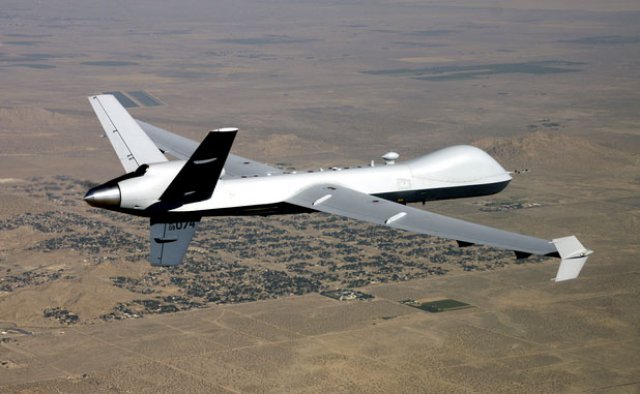 Airspace access is the holy grail for an unmanned-aircraft industry seeing wartime demand winding down and looking to civilian uses for continued growth. Progress has been slow, but there are signs a breakthrough is near.
Airspace access is the holy grail for an unmanned-aircraft industry seeing wartime demand winding down and looking to civilian uses for continued growth. Progress has been slow, but there are signs a breakthrough is near.
Airworthiness certification standards for unmanned aircraft systems are a prerequisite for commercial operations in the National Airspace System (NAS). While industry-led working groups develop performance standards for command-and-control data links and sense-and-avoid systems for UAS, the FAA has taken the first step by issuing type certificates for two unmanned aircraft.
“Type certification allows us to go beyond the norm, which is a UAS operating under a certificate of authorization as a public aircraft, and is the basis for commercial operations,” says Paul McDuffee, vice president of government relations and strategy for Insitu. “To the FAA’s credit, they have been willing to work with industry to come up with solutions for adopting and adapting regulations intended for manned aircraft and applying them to unmanned,” he says.
The Puma and ScanEagle were pathfinder programs for restricted-category certification under the FAA’s existing Federal Aviation Regulation (FAR) Part 21.25 rules. Insitu submitted its application in January, and the process went “astoundingly fast,” McDuffee says. Key was a “carve out” in FAR Part 21.25 for certification of aircraft already accepted for use by the Defense Department, which applies to both systems.
An aviation rulemaking committee chartered by the FAA in 2011 to recommend operating procedures and regulatory standards for UAS access to national airspace has submitted its plan, meanwhile. “It’s a good blueprint for how to do this, says Scott Dann, director of strategic development at General Atomics Aeronautical Systems, noting its similarity to the Access 5 plan developed by NASA and industry in the early 2000s.
The plan proposes allowing appropriately equipped aircraft to “file and fly” above flight level (FL) 180 in Class A airspace, where separation is provided by air traffic control. “This is how it has to go—I don’t see any other way,” says Dann. In the near-term absence of a sense-and-avoid system, “those aircraft equipped to fly above FL 180 will probably have first access to the NAS.”
Under the proposed plan, access would work down to lower altitudes and eventually to the most-congested Class B airspace around major airports. This is likely to require UAS to carry a sense-and-avoid (SAA) system, or detect-and-avoid as it is becoming known. SAA is the combination of two functions: self-separation involving gentle manoeuvres minutes from collision to stay well clear of other aircraft; and collision avoidance involving hard manoeuvres seconds from impact.
Sense-and-avoid is no simple problem. Development of the algorithm for the traffic-alert and collision avoidance system (TCAS) cost $900 million and took several years, and it could be the same for SAA, says Dann. TCAS was government-developed, so industry could avoid liability for collisions. “The same has to happen with SAA,” he says, arguing algorithm and system development, testing and rulemaking involve “a decade’s worth of work that could cost over $1 billion,” although the U.S. Air Force could get there earlier.
Mitre is working with NASA Langley, University of North Dakota (UND) and Draper Laboratory to test a cooperative automatic sense-and-avoid system using automatic dependent surveillance-broadcast (ADS-B) as the sensor. The test involves flights of a NASA Cirrus SR22 surrogate UAS to test SAA algorithms developed by Draper, Mitre and UND.
Flights last September involved simple encounters. Tests last month involved more complex and dynamic encounters, one aircraft turning or climbing into conflict with another. A final series of flights this month will look at using primary radar tracks-broadcast via the traffic information system (TIS-B). “The FAA will never accept ADS-B only. But coupled with primary TIS-B it may help in a layered approach,” Lacher says.
Photo: General Atomics Aeronautical Systems
[This is an extract from an original article by Graham Warwick in Aviation Week. To read the full article, click here. – Ed]

What about flights by small UAS below 400′ in Class G airspace? I hope that we don’t have to wait for everything discussed in this article before we get access for small UAS in Class G airspace.